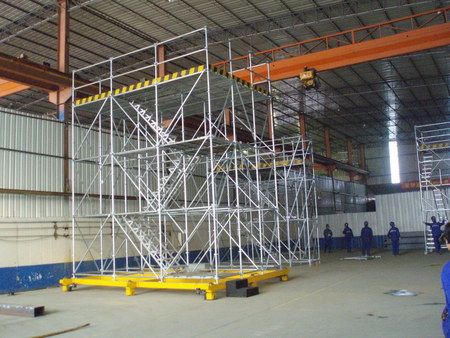Aug . 21, 2024 02:29 Back to list
Scaffolding Solutions for Efficient Slab Formwork Projects and Construction Needs
Scaffolding for Slab Formwork Essential Considerations for Construction Companies
Scaffolding plays a pivotal role in the construction industry, providing the necessary support and access for workers while ensuring safety and efficiency. One specific application of scaffolding is in slab formwork, which is crucial for creating flat surfaces, such as floors and ceilings, in a variety of building projects. For construction companies, understanding the nuances of scaffolding for slab formwork is vital not only for project success but also for maintaining high safety standards.
Understanding Slab Formwork
Slab formwork is a temporary structure used to shape and support concrete until it hardens. It involves the use of panels or molds that are supported by scaffolding. The scaffolding must accommodate the weight of wet concrete, the formwork itself, and the workers who will be pouring the concrete. Thus, a well-designed scaffolding system is crucial to the stability and integrity of the entire operation.
Types of Scaffolding
There are various types of scaffolding systems that can be employed for slab formwork, each tailored to different project needs. Traditional tube and clamp scaffolding, for instance, is highly versatile and can be adapted to complex site layouts. However, for projects requiring rapid assembly, modular scaffolding systems offer efficiency and ease of use. Knowing which type of scaffolding is most suitable for a specific slab formwork project can significantly influence construction timelines and labor costs.
Safety Considerations
scaffolding for slab formwork company

Safety must be the foremost concern when selecting and installing scaffolding for slab formwork. The Occupational Safety and Health Administration (OSHA) outlines strict guidelines that must be adhered to in order to ensure worker safety. This includes the proper assembly of the scaffolding, regular inspections, and the use of safety gear, such as helmets and harnesses. A comprehensive safety training program should be implemented to educate workers about potential hazards associated with scaffolding and concrete work.
Load Capacity and Design
When designing a scaffolding system for slab formwork, it is essential to consider the load capacity. The scaffold must be engineered to support not only the weight of the formwork and wet concrete but also any additional loads from equipment and personnel. Conducting a load analysis helps in determining the appropriate materials and configurations needed to ensure safety.
Efficiency in Operations
An efficient scaffolding system can greatly enhance workflow in slab formwork. Factors such as ease of assembly, reusability of materials, and minimal disruption to ongoing activities can lead to smoother operations. Companies can invest in high-quality scaffolding solutions that offer modular components, easy disassembly, and transportation capabilities, thus reducing downtime and increasing productivity.
Conclusion
In conclusion, scaffolding for slab formwork is a critical aspect of construction that requires careful planning and execution. By choosing the right scaffolding type, adhering to safety regulations, understanding load capacities, and focusing on operational efficiency, construction companies can ensure successful project outcomes. Investing in quality scaffolding not only enhances safety and productivity but also contributes to the broader goal of delivering high-quality construction that meets the needs of clients and adheres to industry standards. As the construction landscape evolves, staying informed about the latest scaffolding technologies and techniques will continue to be essential for companies striving for excellence in their projects.
-
High-Quality U Head Jack Scaffolding – Reliable Scaffolding Jack Head Manufacturer & Factory
NewsJul.08,2025
-
High-Quality I Beam H20 Leading Timber Beam H20 Material Factory, Exporters & Manufacturers
NewsJul.08,2025
-
High-Quality Powder Coating Steel Formwork - Durable & Corrosion Resistant Solutions
NewsJul.07,2025
-
Inclined Column Formwork Supplier – Durable & Precise Solutions for Unique Structures
NewsJul.07,2025
-
High-Quality Water Stop Solutions Trusted Water Stop Company & Suppliers
NewsJul.07,2025
-
High-Quality Formwork Material Supplier Reliable Manufacturer & Factory Solutions
NewsJul.06,2025